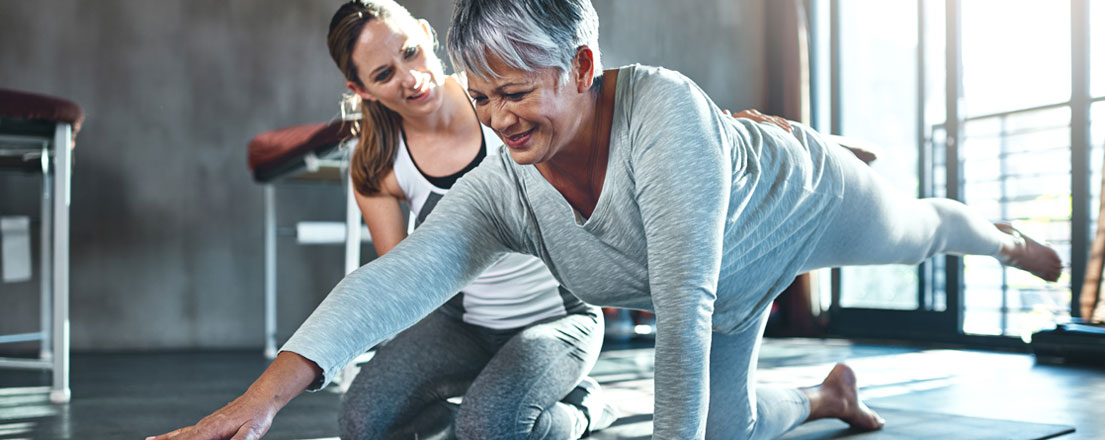
Defeat Middle-Age Height Loss: Tips to Build and Maintain Strong Bones
Pants seem a bit too long? Looking nose to nose with your kids or grandkids a little sooner than you’d expected? Most likely, you’re getting shorter.
Starting at age 40, we lose a quarter to a third of an inch of height each decade, and the process speeds up once we hit 70 and even more at 80, says Dr. Gwendolyn Graddy-Dansby, a geriatrician (specialist in the medical care of the elderly) and medical director of PACE Southeast Michigan. PACE is a partnership between Henry Ford Health System and Presbyterian Villages of Michigan that provides daycare and health services for older adults to continue living at home.
The loss of both bone density and muscle mass, Graddy-Dansby says, is a natural consequence of aging, although some people lose more height, some less. Those most affected may have an underlying genetic risk or a condition such as osteoporosis. Those who lose less height are likely to be athletic and active.
“Falls are a major concern,” Graddy-Dansby says. “Falls can cause fractures, which can lead to nursing home placement, and some people never leave the nursing home. With others, the fall can cause them to never leave their house because of fear.”
Older adults can take an active role in reducing their risk of falls by improving their agility, Graddy-Dansby says, which includes “balance, speed, strength and coordination. Anything an older adult can do to make muscles stronger or more flexible will reduce the risk of falls.”
Step up for better bone and muscle health
To build and maintain strong bones and muscles, the National Osteoporosis Foundation recommends:
- Weight-bearing exercises such as dancing, aerobics, jogging, stair climbing, fast walking outside or on an elliptical machine or treadmill.
- Muscle-strengthening exercises including lifting weights, using exercise bands or weight machines.
Dr. Graddy-Dansby's suggestions for better agility:
- Stand on your toes for three seconds, staying close to a chair, counter or wall for balance. “If you can’t do it that long, just do what you can. Just do it.’
- Holding on to something or someone for balance, while you’re waiting in line at the grocery store or bank, stand on one foot for 2 to 3 seconds, then switch to the other foot.
- To stand up from a seated position, keep your hands in your lap – don't use them to help you up.
- Stand behind a chair, hold on and rise up on your toes. Then squat and bend your knees. Do 10 to 15 repetitions, two or three times a day. “Squat as far down as you can go and still get back up. The more you do, the deeper your squats will be.”
- Tai chi, Pilates and yoga are excellent whole-body workouts. “Anything that focuses on balance will strengthen your body’s midsection, or core. And when you strengthen your core, you improve balance.” To avoid injuries, she suggests joining a class and working with a qualified instructor.
- Walk. “It’s good for everything: your heart, blood pressure, weight. It helps with muscle mass, strength and coordination.”
- Dress wisely. No long pants or robes you can trip on. Wear low-heeled shoes that fit correctly and choose lace-ups over slip-ons.
- Make your home safer with good lighting, handrails on all staircases and grab bars in the bath. And for good measure, throw out your throw rugs.
![]()
Visit your doctor to discuss your risk of falls and a test for osteoporosis. If you fall, even if you don't hurt yourself, tell your health care provider.
Categories: Get Healthy
